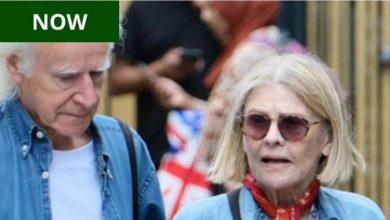
Breaking – Hillary Clinton Hospitalized in Critical Condition! See more
The first alerts hit newsrooms just after midnight, vague enough to downplay and ominous enough to spread like wildfire. A former Secretary of State, one of the most influential political figures of the last half-century, had been rushed to a private medical center under emergency conditions. No name confirmed, no diagnosis released — just whispers behind closed doors and hospital staff tightening their lips as cameras began to gather outside.
Within an hour, the story was everywhere.
Anonymous insiders described the situation as “critical.” Others refused to comment entirely, fueling even darker speculation. The hospital’s top floor was sealed off, guards were stationed at every elevator, and aides close to the stateswoman abruptly cancelled all scheduled events. The entire scene carried the weight of history pressing down on a single building.
Inside, doctors worked through a blur of nonstop decisions. What began as a routine evening at her home had spiraled into a medical emergency severe enough that minutes mattered. Paramedics reported she was conscious when they arrived but fading fast. By the time she was stabilized, her family had already been alerted and flown in, some arriving with red, sleepless eyes, others in stunned silence.
Outside, the reaction unfolded in real time. Supporters refreshed news feeds, desperate for clarity. Critics who normally never missed a chance to speak her name fell strangely silent. Political commentators, normally loud and eager to speculate, held back. Something about the moment made everyone step cautiously, as if any wrong word might tip the balance.
She was no ordinary public figure. She had spent decades walking through fire — elections, investigations, diplomacy, scandals, triumphs, failures, achievements and controversies that had shaped policy, culture, and global strategy. Whether you admired her or resented her, she was larger than life. Her name was a fixture of modern political history. To see that legacy suddenly overshadowed by an emergency no one understood was surreal.
Inside the hospital, doctors worked hour by hour, closely monitoring her condition. Specialists were flown in from three different cities. All the medical jargon delivered to family members came down to one truth: her fate balanced on a razor edge. Her body was fighting a battle she might not win.
By morning, thousands had gathered online to share memories, reflections, prayers, arguments, and a collective mix of shock and worry. Her speeches resurfaced. Old interviews went viral. Mentions from people she had mentored and inspired spread across social platforms, each message dripping with both admiration and fear. Even individuals who disagreed with her politically found themselves pausing, realizing that whatever position they held, her presence had shaped their lifetime.
Still, the official silence continued. No press conference. No updates. No confirmation of the cause. Just a single sentence from her spokesperson: “Her family is asking for privacy as she receives medical care.”
That only intensified the storm.
Reporters staked out every possible entrance to the hospital. Security teams began redirecting traffic. Helicopters traced circles above the building. By noon, reporters described the scene as “organized chaos,” a collision of curiosity and dread.
Inside, her family kept constant vigil. They sat together in a quiet, dimly lit waiting room just outside the intensive care unit. Her closest confidants arrived one by one, each of them wearing expressions that said more than any briefing. The tension was visible in their hunched shoulders, their tremors, their whispered conversations cut short whenever a doctor approached.
Her youngest granddaughter clutched a photo of the two of them taken last summer. Her daughter sat stiffly, jaw clenched, fighting tears she refused to let fall in public. Her husband, normally composed in the face of national scrutiny, looked older, smaller, as if the weight of all the years had finally settled on him at once.
Meanwhile, staff members who had worked with her during her public career released statements describing her resilience. Allies recounted moments where she’d pushed through exhaustion, illness, or heartbreak with the same mantra she’d repeated for decades: “There’s work to do.” The irony wasn’t lost: the woman who always kept going now lay in a hospital bed unable to rise.
As the day passed, rumors multiplied. Some claimed she had suffered a severe cardiac episode. Others speculated a neurological event. None of it was verified, yet the theories spread faster than official sources could dismiss them. Cable networks launched nonstop coverage, panel discussions running with little real information and a lot of “We don’t yet know.”
It wasn’t until late afternoon that a quiet shift occurred behind the scenes. A team of physicians walked down the hall toward her family with expressions that made the air seem heavier. A nurse closed the blinds around her room, and monitors beeped in frantic patterns. A hand went to one family member’s mouth. Another sagged into a chair. Doctors spoke in low, steady voices. They gave the facts plainly, compassionately, and the family listened — not because they wanted to, but because there was no option left but to hear.
Outside the hospital walls, the world kept waiting.
The evening brought a thin sliver of light: she was still fighting. Her condition remained critical but stable enough that doctors believed the night ahead would be the true test. Whether she pulled through or slipped away, they couldn’t say.
Supporters gathered at candlelight vigils across several cities, holding photos, handwritten notes, and quiet prayers. Her critics, strangely somber, acknowledged the gravity of the moment. Even political rivals posted brief messages of sympathy, recognizing that some events transcend rivalry.
As midnight approached for the second time since the crisis began, the hospital remained under tight lockdown. Inside one small private room, surrounded by the hum of machines and the murmured hopes of those who loved her, one of the most formidable figures in modern American political history lay fighting for the one thing even power cannot guarantee — more time.
And a nation, whether it adored her or opposed her, waited in a tense, breath-held silence, wondering what the next sunrise would bring.




